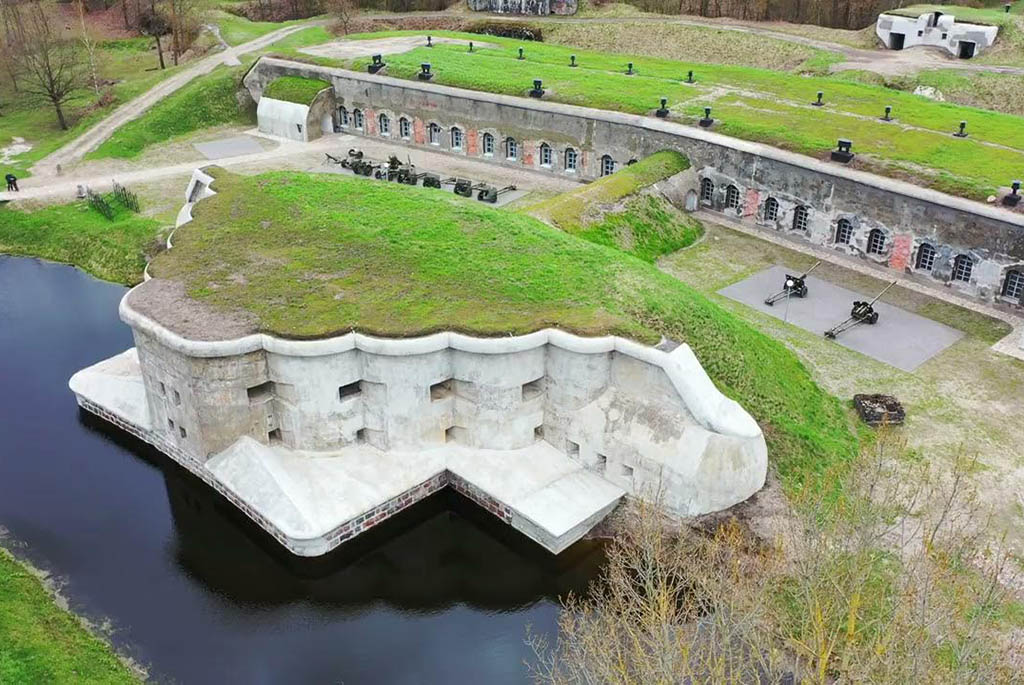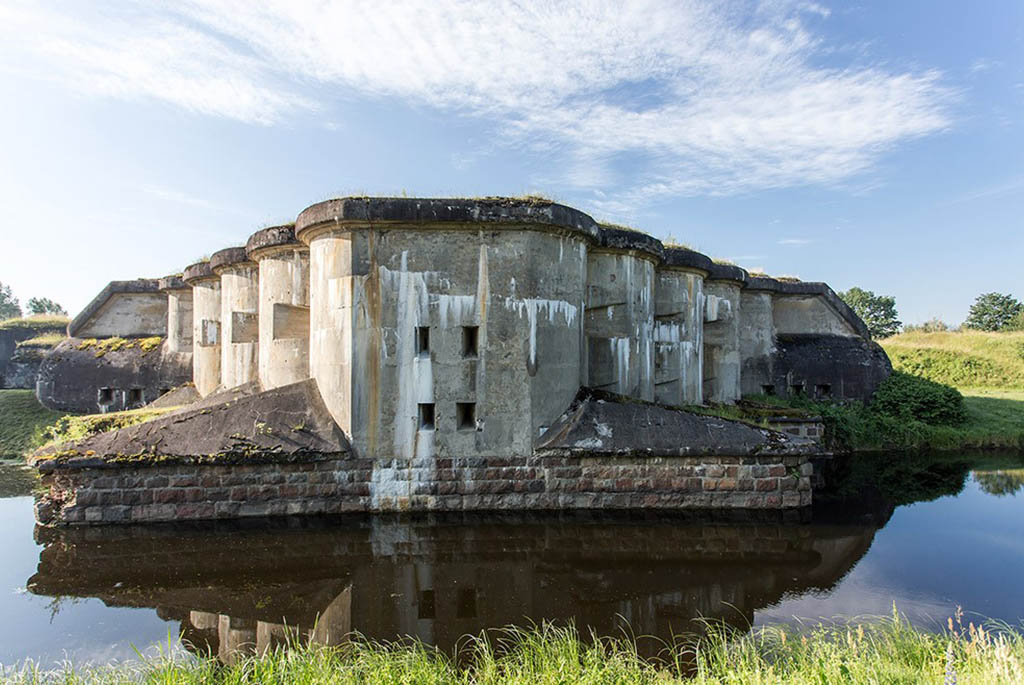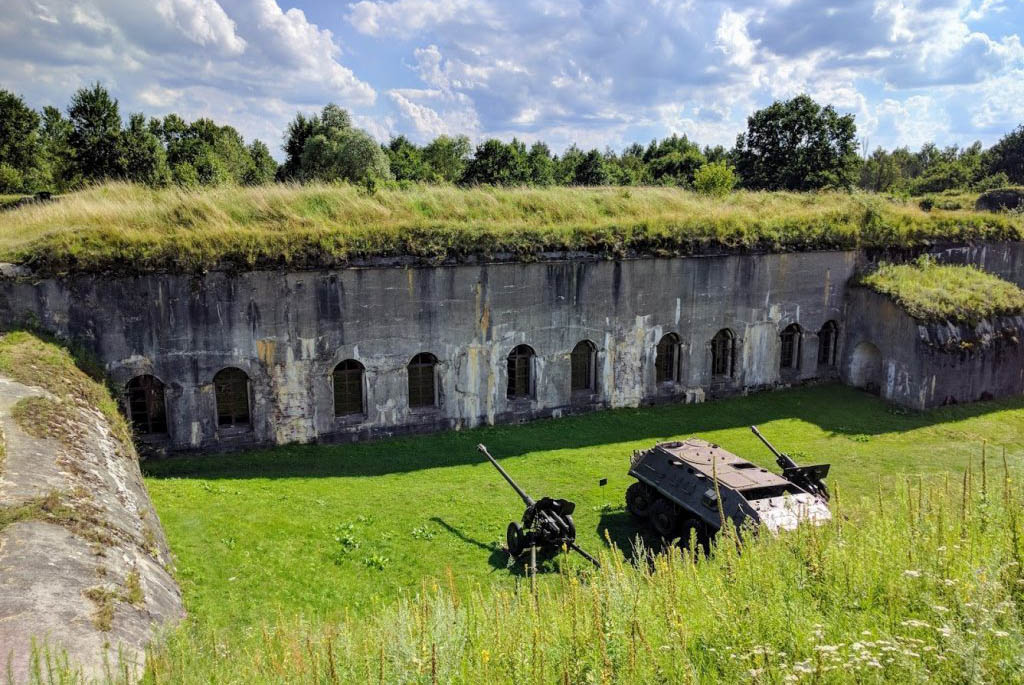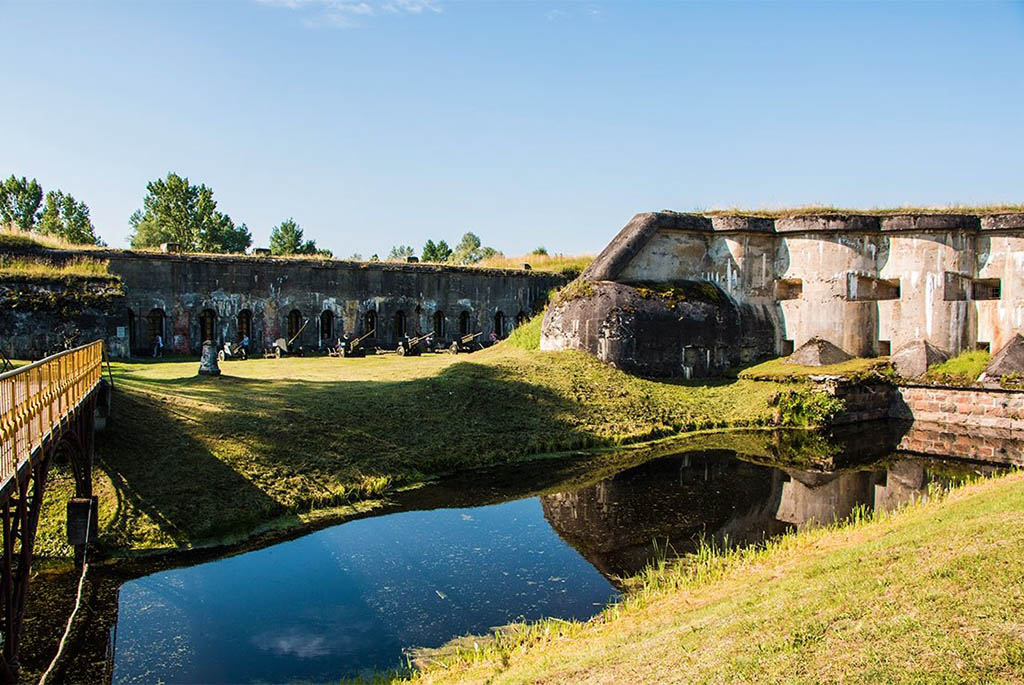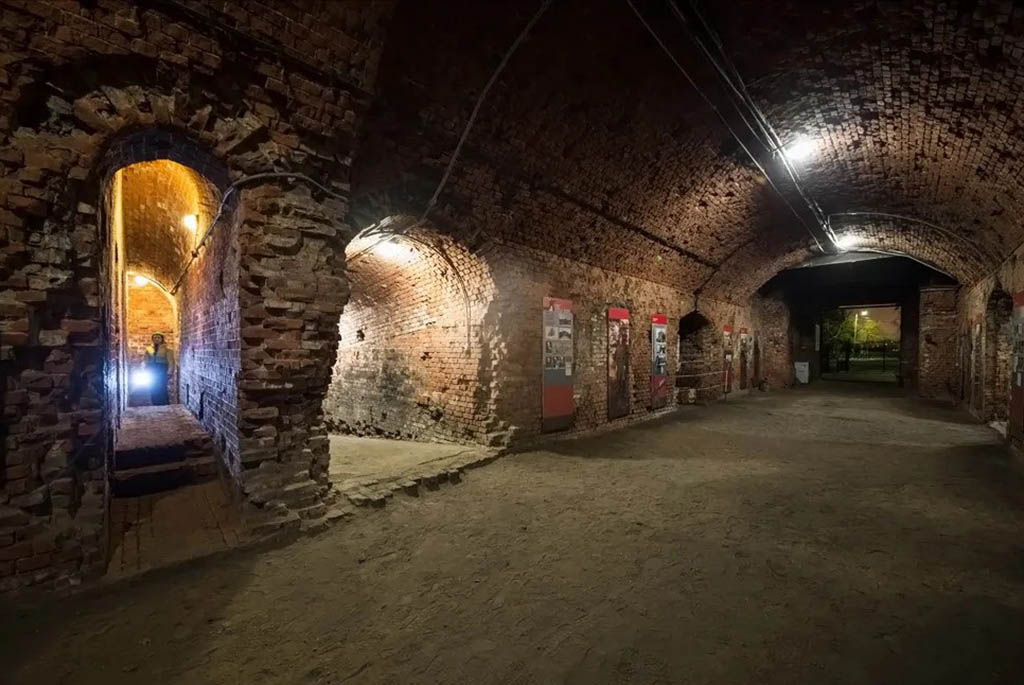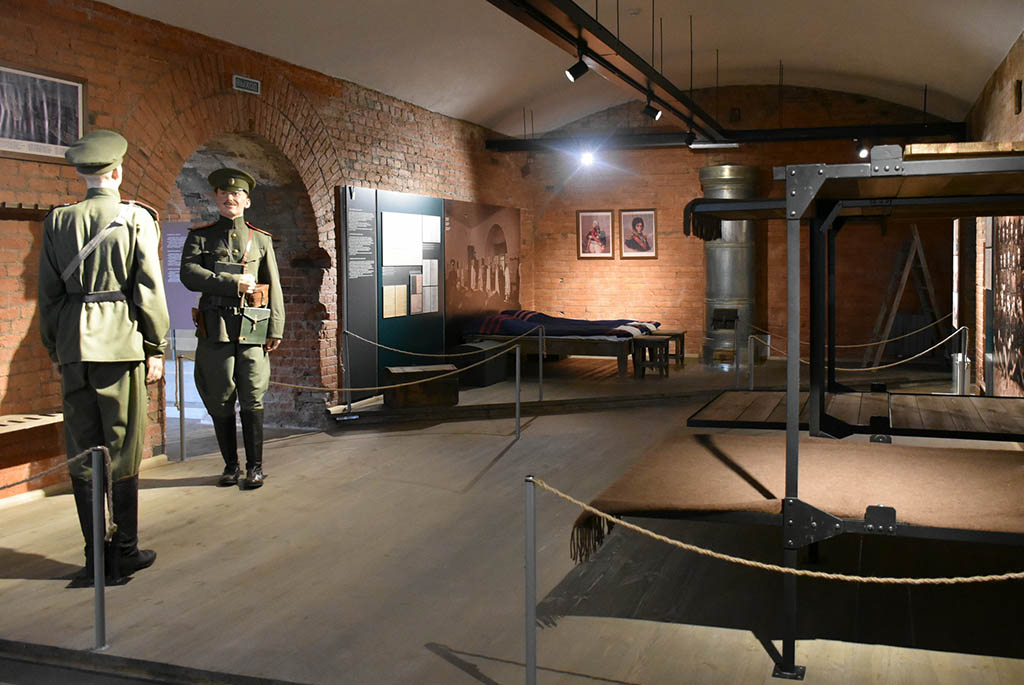It is one of the best examples of European military-engineering thought of the late 19th and early 20th centuries. This pentagonal structure, located 3 kilometers south of the main citadel, was built in 1879-1880. The defensive building was surrounded by a water moat, with caponiers and half-caponiers - niches allowing fire in several opposite directions - built for firing at enemies. Like the main citadel, the fort was built of red brick, but in the early 20th century, the structure was modernized and reinforced with concrete cladding.
Before World War I, an artillery company of the Russian army was stationed at fortification No. 5. However, in 1915, the tsarist army left the fort, and until 1918, it was occupied by German troops. During the period when Brest was part of Poland, the territory of the fortification housed Polish army warehouses.
During World War II, Fort No. 5 was captured by Nazi forces and was not liberated by the Soviet army until early 1944. After the war, the building belonged to a military unit and was used as an ammunition storage. In the 1960s, after the military unit was withdrawn, the fortification was abandoned.
In 1995, Brest Fort No. 5 was granted the status of a state historical and cultural value. In 2000, a museum "5 Fort", a branch of the "Brest Fortress-Hero" memorial complex, was opened on the territory of the fortification.
What to see in the museum?
The "5 Fort" Museum is an impressive structure that covers an area of a hectare. It amazes with its power, military precision, and architectural thoughtfulness. The museum's exhibition includes:
- An outdoor exhibition of Great Patriotic War-era artillery.
- A photo exhibition dedicated to the history of the construction of the Brest Fortress.
- A permanent exhibition consisting of six halls, telling about the history of fortification constructions in Belarus, the history of the fort itself and its modernization, and the military past of Brest-Litovsk. Here, visitors will see a reconstruction of a soldier's life at the beginning of the 20th century, learn about the events of the beginning of World War I, and the significance of the Brest-Litovsk citadel in the defense system of the western borders of the Russian Empire.
Visitors to the museum can walk around the fort - inspecting casemates, corridors, stairs, underground passages, and galleries.
The museum can be visited independently or as part of a guided tour. The institution's staff recommend that visitors wear comfortable shoes and warm clothing, as the casemates are not heated, and the underground rooms are cool even in warm weather.
The "5 Fort" Museum is located in the suburbs of Brest - the Gershony district. To get to the site, take public transport to the "Fort" or "Nectar" stops, then walk about a kilometer. There is a parking lot near the museum.
